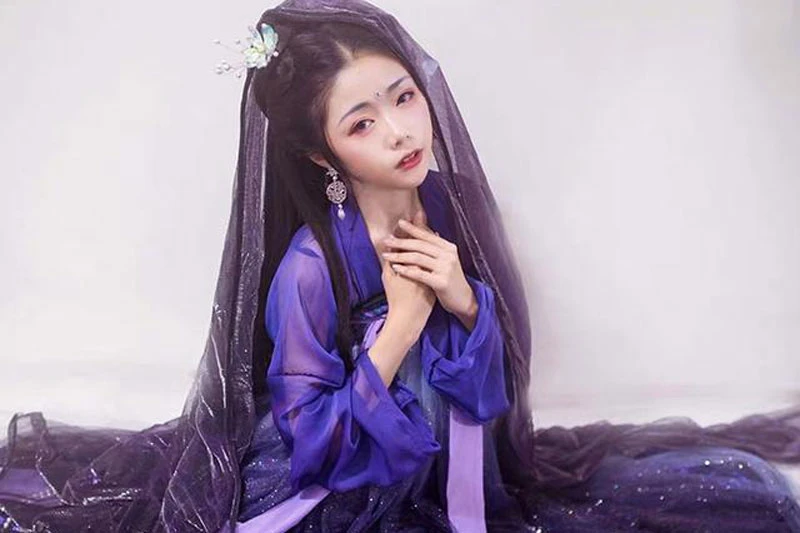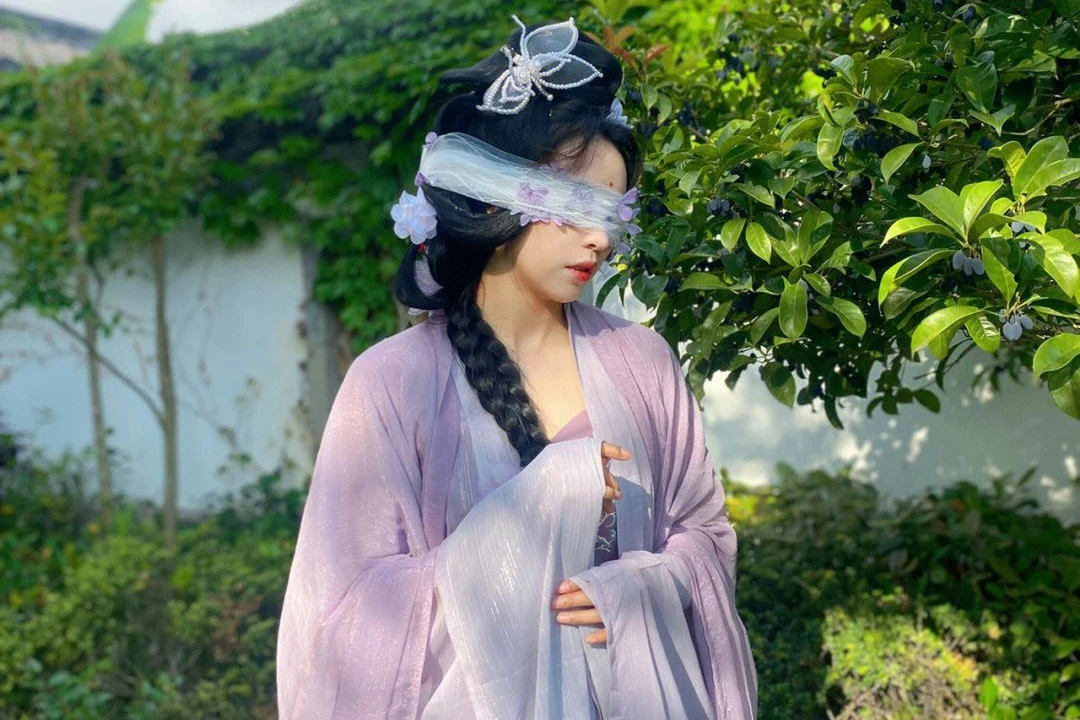In the kaleidoscope of traditional Chinese attire, the purple hanfu emerges as a symbol of royalty, regality, and cultural richness. Beyond its visual appeal, the color purple in Chinese tradition holds profound meanings, weaving a narrative that extends through history and aesthetics. This expansive exploration delves into the essence of the purple hanfu, unveiling the cultural significance of the Chinese purple color, exploring the nuances of traditional purple dresses, and offering insights into the art of styling this enchanting garment for various occasions.
Chinese Purple: A Color of Imperial Splendor
In Chinese culture, purple is not just a color; it is a symbol of imperial majesty and regal authority. Historically, the use of purple was restricted to the emperor and his family, making it a hue associated with power, wealth, and prestige. The Chinese purple color, often referred to as “Zi,” has deep roots in imperial history, signifying the divine right to rule.
Wearing purple was considered an exclusive privilege, and the use of this color in attire was regulated by sumptuary laws. As a result, the sight of purple garments was a rare and awe-inspiring spectacle, reserved for auspicious occasions and imperial ceremonies.
Shades of Chinese Purple: From Lavender to Royal Plum
The Chinese purple color palette is as diverse as the cultural tapestry it represents. Each shade carries its own unique significance and charm, allowing for a broad spectrum of expression within the realm of purple hanfu.
Lavender Loveliness:
Lighter shades of purple, such as lavender, evoke a sense of delicacy and refinement. Lavender purple hanfu is often associated with youthful beauty and innocence, making it a popular choice for ceremonies, festivals, and cultural events.
Royal Plum:
Deeper and richer shades, like royal plum or deep violet, exude a sense of regality and sophistication. These hues are ideal for formal occasions, conveying a sense of authority and elegance that harks back to the imperial history of the Chinese purple color.
Mystical Mauve:
Mauve, with its subtle blend of purple and pink undertones, adds a touch of mystique to the purple hanfu. This shade is often chosen for its romantic and enchanting appeal, making it suitable for special events and celebrations.
The Resurgence of Traditional Chinese Purple Dresses
While the imperial era strictly regulated the use of purple, contemporary fashion embraces the allure of traditional Chinese purple dresses, allowing a wider audience to experience the richness of this color. The resurgence of purple hanfu in modern times is a celebration of cultural heritage and a nod to the timeless elegance of imperial fashion.
Contemporary designers often draw inspiration from traditional Chinese purple dresses, creating modern interpretations that blend the opulence of the past with the sensibilities of the present. These designs showcase the adaptability of purple hanfu, making it accessible to a diverse range of wearers.
Purple hanfu has found a special place in weddings and celebratory events, symbolizing not only the richness of love and commitment but also the auspiciousness associated with imperial traditions. Brides adorned in purple hanfu radiate a sense of grace and timeless beauty. During cultural festivals and events, the sight of individuals donning purple hanfu adds a touch of historical grandeur to the celebrations. This resurgence of traditional attire reflects a growing appreciation for the cultural roots that continue to influence modern fashion.
The Art of Styling Purple Hanfu
Styling the purple hanfu involves a thoughtful consideration of accessories, makeup, and overall presentation. Whether it’s a festive celebration, a formal event, or a casual outing, here are some tips to help you style your purple hanfu with grace:
Enhance the regal allure of purple hanfu by incorporating gold accessories. Gold complements the richness of purple, adding a touch of opulence and creating a harmonious balance that echoes imperial splendor. Traditional Chinese purple dresses often feature intricate myth embroidery and patterns. Let these details shine by keeping accessories simple, allowing the beauty of the hanfu’s design to take center stage.
Opt for classic hairstyles that complement the elegance of purple hanfu. Traditional updos, adorned with ornate hairpins or combs, add a touch of authenticity to your overall look. Consider incorporating cultural symbols into your ensemble. For example, dragon or phoenix motifs can add layers of meaning and connection to Chinese cultural heritage.
Keep makeup harmonious with the overall aesthetic of purple hanfu. Soft, natural tones for eyeshadow and lipstick can enhance your features without overshadowing the regal beauty of the garment.
In conclusion, the purple hanfu stands as a cultural ode to royalty, a celebration of imperial grandeur that transcends time. From the historical exclusivity of the Chinese purple color to its modern resurgence in traditional dresses, the purple hanfu encapsulates the enduring charm of Chinese cultural heritage. As you embrace the regal elegance of purple hanfu, may you not only wear a garment but partake in a cultural journey that echoes the majesty of China’s imperial past.


